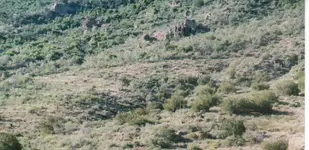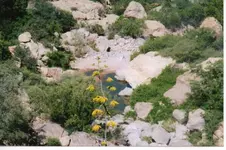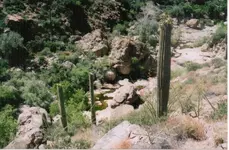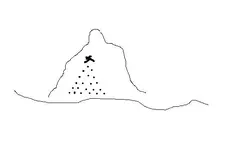I'm always interested in different possibilities for solving the Stone Maps.
However, since I have been somewhat specializing in the question of "Who was the intended reader(s) of the Stone Maps," as a probable significant clue to the meanings of the symbols and mapping style, I need to ask you: "How was the intended reader of the Stone Maps supposed to know about your "special positioning and scaling" required of these?
And then, naturally, who was the intended reader(s)?
This is just my opinion.
The "intended reader" is you, me, and anyone else who is beguiled by the cipher.
Think about where they were "found".
Think about the letters D - O - N.
SO, in my mind, it did not matter who discovered the stones.
It was only important that they were found and perhaps where they were "reportedly found".
Discovered in 48/9' and first (published) reported on in 64'?
It took some time (15 years+/-), but they ultimately did find their way into popular culture.
And I believe that this was the goal.
But, in the end, I believe that the cipher was a gift to the DON's.
From a DON.
edit: (
I want to be clear regarding the Don's and their involvement. Halseth was an "individualist" and it is my guess that he work independent of the Don's.)
How does one know "how" to read the maps?
Well, it seems that many of the theories regarding the stones use an aerial view solution.
Is it the availability of Google Earth driving these theories or something called intuition?
Odd. Halseth is the name.
This I can say with some confidence.
View attachment 869108
Find an aerial photograph of the area, ideally one from the period.... no easy task.
For Google Earthians, play with the year and time effects... adjusting shadow and light.
I use the oldest color imagery because it has very little vegetation, the photographs being taken in the winter months.
Three of the stones offer a unique "registration" mark.
The marks for me were the hat, the knife, and the horses right ear.
Look for geographic features in your photograph that "match" these marks.
When you find a corresponding "mark", use it to determine scale and positioning.
Repeat for the remaining stones.
Now comes the difficult part.
Using the formula on the trail stone, apply triangulation to the composite map.
If the theory is correct, and if there is something to be discovered other than a lesson in greed...
well, this should get you there if there is a place to get.







 Do you know where that familiar shape is.....on the ground?
Do you know where that familiar shape is.....on the ground?

